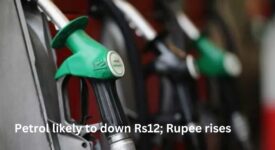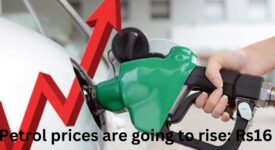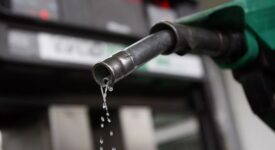This week, there is expected to be a drop in petrol and diesel prices of around Rs5–18 per liter, respectively, for the third consecutive fortnight. The decrease is mainly the result of advances in the rupee.
According to official sources, unless the caretaker government raises the petroleum levy even higher, the price of High-Speed Diesel (HSD) is expected to drop by roughly Rs5–6 per liter, to less than Rs300 per liter. However, the price of gasoline would drop by almost Rs. 18 per liter.
The rupee’s within Rs3 gain against the dollar over the past two weeks is mainly to blame for this, since the average price of petrol has grown by roughly $3.5 per barrel while that of diesel has decreased by about $1.3 per barrel.
According to the sources, given the fact that revenue collections have exceeded objectives thus far, the government saw an opportunity to raise the petroleum levy (PL) on HSD to the maximum allowable level of Rs60 per liter from Rs55 at present.
The peak petrol price is already at Rs 60 per liter. The current fiscal year’s budget aim and commitments set to the International Monetary Fund (IMF) require the government to impose taxes totalling around Rs869 billion in PL on petroleum products.
Even though its per-litre petrol tariffs had gradually grown over time and stayed mostly constant at Rs50 per liter throughout the first quarter of the fiscal year, total PL collection exceeded Rs222 billion in the first quarter that ended on September 30, 2023.
The Consumer Price Index reached 31.4 percent in September, and rising prices for power and petrol have been the main causes of this pattern. A significant increase in gas prices approved by the government last week is expected to bolster this pace.
Based on current tax rates and other overheads, informed sources that the price of petrol could drop by Rs17–18 per liter. This is because the rupee has appreciated against the US dollar over the past two weeks, going from Rs282 to Rs279; however, the price of gasoline has increased in the Middle East, going from $88 to $91 per barrel, partially offset by a decrease in premiums paid by Pakistan State Oil (PSO) to secure import cargos.
As a result, the price of petrol would drop to less than Rs 270 per liter.
The calculation depends on estimations for the remaining days of the current fortnight and actual costs for the first 12 days.
In addition, if the government decides to keep the PL at Rs55 per liter, the price of HSD might drop by roughly Rs5–6 per liter. Nonetheless, the Ministry of Finance can decide to raise the PL by Rs5 per liter in light of the price decrease. The HSD pricing could remain the same in that scenario. In contrast to gasoline, the price of HSD has fallen by around one dollar per barrel on the global market during the past two weeks, from $114 to $113.
The projected price of HSD would therefore be between Rs296 and Rs298 if the government chooses to keep the PL rate in place.
The caretaker government will be reducing fuel prices for the third time in a row following three increases in a run. The retail price of gasoline and high-speed diesel reached a historic Rs331-333 per liter until September 30 after rising by Rs58.43 and Rs55.83 per liter, respectively, between August 15 and September 15.
The government levies a petroleum development levy (PDL) of Rs. 60 per liter on gasoline and Rs. 55 per liter on HSD, although the general sales tax (GST) is zero on all petroleum products.
It also charges Rs 50 per liter for 95RON petrol and a high octane blending component. On gasoline and HSD, the government additionally levies import duties of about Rs. 19–21 per liter. With monthly sales of over 700,000–800,000 tonnes for gasoline and HSD compared to roughly 10,000 tonnes for kerosene, these fuels are the main sources of revenue.






